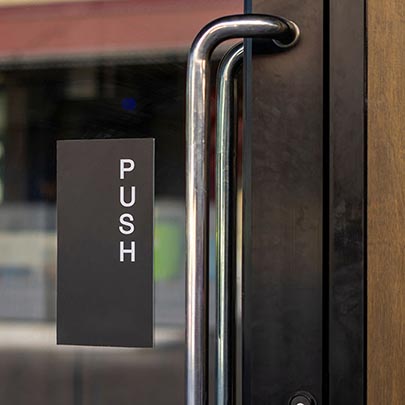User Experience (UX) Design focuses on how someone interacts with a product, a piece of media, or a tool. UX Design has become part of product design, manufacturing, and even learning. We can see its impact every time that we open a door, browse a website, or use a coffee machine.
Applying UX Design within Learning and Development is sometimes referred to as Learner Experience (LX) Design. We have likely heard LX Design mentioned by our clients, our Learning Consultants, and our Project Managers. How can we leverage these techniques and improve our own work?
1. Understand the problem statement
As Instructional Designers, we have multiple customers. The client is often two parts: the stakeholder or senior manager that we are working with, and the learners. The client may have a need or a belief that may not align with their learner’s needs or beliefs.
For example, let’s say we have been asked to develop learning on how to use a form. The client tells us that the form is being completed incorrectly and this is causing costly rework. They want to remind their learners how to complete the form properly.
We could take that at face value and create the training that the client has asked for. Maybe we make a fun, gold-standard, interactive simulation and scenario-based training that we consider submitting for an award?
Or we could spend some time with our learners first. By sitting with the team, observing their day-to-day role, and talking to them about the form, we might discover that the form is inefficient, repeats questions, and needs to be filled in under a strict time pressure. We might learn that the learner knows how to fill in the form; that’s not the problem. The problem is the process and their environment.
Knowing that, we now know that training on how to complete the form could anger or frustrate the team. They may feel that they are not being listened to by their management. In these instances, we need to have the courage to tell the client that they might be pursuing the wrong solution. We might also have the opportunity to work with the team supporting the form to suggest changes that improve not just the learner’s experience, but the underlying tool.
2. Develop personas
 Sometimes, we can be guilty of getting overly excited about an idea and making what we want to work on rather than what the client needs. As Instructional Designers, we want to learn, grow, have fun, and be innovative in our work. That’s a healthy and engaged mindset. That said, it can become problematic if we lose sight of our customer.
Sometimes, we can be guilty of getting overly excited about an idea and making what we want to work on rather than what the client needs. As Instructional Designers, we want to learn, grow, have fun, and be innovative in our work. That’s a healthy and engaged mindset. That said, it can become problematic if we lose sight of our customer.
Personas allow us to create fictional learners. It helps us understand their needs. When we’re making design decisions, we can ask ourselves, “Does this match the persona’s profile?”
A powerful template for creating a basic, entry-level persona is:
As a _____, I want _____, so that _____.
We just talked about how our client represents multiple needs statements. We can create multiple personas to reflect that. For example:
As a call handler, I want to handle customers’ information securely, so that I don’t expose them to risk of identity theft and fraud.
As a senior manager, I want to make my employees aware of our security policies and procedures, so that I minimize the business’ risk of facing fines, legal action, and reputational damage.
As a customer, I want my call to be handled quickly and professionally, so that I feel confident and reassured.
More advanced personas consider someone’s age, background, level of education, morale, existing experience and knowledge in their role, and are much more fleshed out. It is important to base personas on interviews with real people so that we don’t fall into the trap of using assumed personas. These are often referred to as proto-personas.
Once a documented persona is in place, it’s often much easier put ourselves into “the learner’s shoes” to create the most appropriate and impactful design. Without the persona, we may rely heavily on our personal view and, once again, build what we want, rather than what the learner needs.
3. Form follows function
Making sure something works is more important than making sure it looks nice. As people with Designer in our job title, that might hurt to hear. We are generally visually stimulated people.
 We respond to “Don’t judge a book by its cover” by explaining that people still do exactly that, anyway. Despite that, we must accept that it doesn’t matter how pretty the learning is if the learner can’t use or navigate it.
We respond to “Don’t judge a book by its cover” by explaining that people still do exactly that, anyway. Despite that, we must accept that it doesn’t matter how pretty the learning is if the learner can’t use or navigate it.
Ideal UX Design means that the form of something communicates its function without needing an explanation. Let’s look at a door, for example. A push door often has a flat metal surface we instinctively push on, while a pull door has a handle we grab and pull on. We don’t consciously notice it when designers get it right, but I’m sure we’ve all had an awkward moment when a push door has had a pull handle.
How does that translate to learning content? A Next button is often found in the bottom right-hand corner. Why is that? We read left-to-right, top-to-bottom, so our eyes naturally end up in that position at the time we need that button. It’s often a symbol or an arrow, rather than the word Next. Why is that? It’s faster and easier to find and recognize than text. It helps people whose first language might not be English.
How would the position and symbol of a Next button change if you were localizing the content for Japan, who read top-to-bottom, right-to-left? These considerations inform every element of our learning solution’s design.
4. Invest in usability testing
Usability testing is an objective: “Does this do what it says on the tin?” We step back, we observe, and we do not influence the results.
Let’s say that we’ve designed a car. We need to know that the car works. The car cannot operate without a driver, so we ask someone to drive it for us. Our observations are about the car. Does it work? Is the driver able to find and use the pedals? Do the headlights turn on? That is a usability test.
We are not testing the driver. We are not asking their opinion. We are not concerned with what colour options the car should come in. This is a user test; this is not a focus group.
For learning, we would ideally be in a separate room to the learner. There would be a camera on the learner’s face and hands, and we would be able to see their screen. The learner would have a facilitator in the room; however, the facilitator’s job is to assign tasks to the learner and see if they can complete those tasks. The facilitator does not influence the test. If the learner asks the facilitator a question, such as “What do I do next?” The facilitator responds with the question, “What do you think you should do?”
During any design work, we make assumptions, we assume things are going to be obvious or intuitive, we trust our guts. A usability test allows us to see if we made the right calls or whether we need to change our design.
5. Fail faster

There is nothing worse than pouring our heart, soul, time, and energy into a piece of learning only to discover that the client had a different vision, or it fails a usability test, or it doesn’t generate the business results that the client needed.
We complete a Training Needs Analysis (TNA) and provide storyboards to minimize that risk. We follow the phrase, “If you have eight hours to chop down a tree, spend the first six sharpening your axe.” But we can still commit to a solution too soon.
Fail faster is the agile concept of rapidly developing grey box prototypes that we can quickly test and iterate upon. Fail faster allows us to identify issues sooner, spend fewer resources overall, and create stronger outputs and final products. Stay tuned on that “agile” word. You’ll see more about that in a future blog.
It can be messy, it can be pen and paper, it can have placeholder text, it can look ugly, it can be a collaborative effort. It is throwing ideas at the wall and seeing what sticks. These sessions can be fun, liberating, and generate fantastic concepts that we might not have arrived at otherwise.
In summary
Those are five UX Design tricks that every Instructional Designer needs to know. What were your favourites? Have you used any of these techniques before?
You can find more blogs on our website, https://www.pulselearning.com. If you have an upcoming Learning and Development project, and you would like to partner with an industry leader with over 20 years’ experience, book a call with us today!


